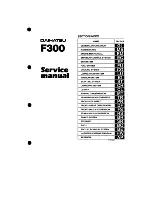
STARTING AND DRIVING
490
Petrol
It is important to use the correct fuel during
refuelling. Petrol is available with different
octane ratings that are adapted for different
types of driving.
Only use petrol from well-known producers.
Never use fuel of dubious quality. The petrol
must fulfil the EN 228 standard.
•
Fuel that contains up to 10 percent by
volume ethanol is permitted.
•
EN 228 E10 petrol (max 10 percent by
volume ethanol) is approved for use.
•
Ethanol higher than E10
(max. 10 percent by volume ethanol) is
not permitted, e.g. E85 is not permit-
ted.
Octane rating
•
RON 95 can be used for normal driving.
•
RON 98 is recommended for good power
and low fuel consumption.
•
An octane rating lower than RON 95 must
not be used.
When driving in temperatures above +38 °C
(100 °F), fuel with the highest octane rating is
recommended for adapted performance and
fuel economy.
•
Use only unleaded petrol to avoid dam-
aging the catalytic converter.
•
Fuel containing metallic additives must
not be used.
•
Do not use any additives which have
not been recommended by Volvo.
Related information
•
•
•
Petrol particle filter (p. 490)
•
Petrol particle filter
15
Petrol cars are fitted with particle filters for
more efficient emission control.
Particles in the exhaust gases are collected in
the petrol particle filter during normal driving.
In normal driving conditions, passive regenera-
tion takes place, which leads to the particles
being oxidised and burned away. The filter is
emptied in this way.
If the car is driven at low speed or with repea-
ted cold starts in low outside temperature,
active regeneration may be necessary. Regen-
eration of the particulate filter is automatic and
normally takes 10-20 minutes. Fuel consump-
tion may temporarily increase during regenera-
tion.
Use the parking heater in cold weather - the
engine then reaches normal operating tem-
perature more quickly.
When driving short distances at low
speeds in a petrol car
The capacity of the emissions system is affec-
ted by how the car is driven. Driving varying
distances and at different speeds is important
in order to achieve performance that is as
energy-efficient as possible.
Driving short distances at low speeds (or in
cold climates) frequently, where the engine
does not reach normal operating temperature,
can lead to problems that can eventually
Summary of Contents for XC60 Twin Engine 2020
Page 1: ...XC60 T W I N E N G I N E OWNER S MANUAL...
Page 2: ......
Page 18: ......
Page 19: ...OWNER S INFORMATION...
Page 28: ......
Page 29: ...YOUR VOLVO...
Page 45: ...SAFETY...
Page 77: ...DISPLAYS AND VOICE CONTROL...
Page 149: ...LIGHTING...
Page 164: ......
Page 165: ...WINDOWS GLASS AND MIRRORS...
Page 183: ...SEATS AND STEERING WHEEL...
Page 200: ......
Page 201: ...CLIMATE...
Page 238: ......
Page 239: ...KEY LOCKS AND ALARM...
Page 259: ...KEY LOCKS AND ALARM 257 Country Area Type approval Oman Serbia...
Page 262: ...KEY LOCKS AND ALARM 260 Country Area Type approval Oman Serbia...
Page 284: ......
Page 285: ...DRIVER SUPPORT...
Page 416: ......
Page 417: ...HYBRID INFORMATION...
Page 444: ......
Page 445: ...STARTING AND DRIVING...
Page 514: ......
Page 515: ...SOUND MEDIA AND INTERNET...
Page 570: ......
Page 571: ...VOLVO ON CALL...
Page 573: ...WHEELS AND TYRES...
Page 600: ......
Page 601: ...LOADING STORAGE AND PASSENGER COMPARTMENT...
Page 621: ...MAINTENANCE AND SERVICE...
Page 644: ...MAINTENANCE AND SERVICE 642 Fuses in engine compartment p 643 Fuses under glovebox p 650...
Page 679: ...SPECIFICATIONS...
Page 713: ......
Page 714: ...TP 28778 English Int AT 1917 MY20 Copyright 2000 2019 Volvo Car Corporation...
















































